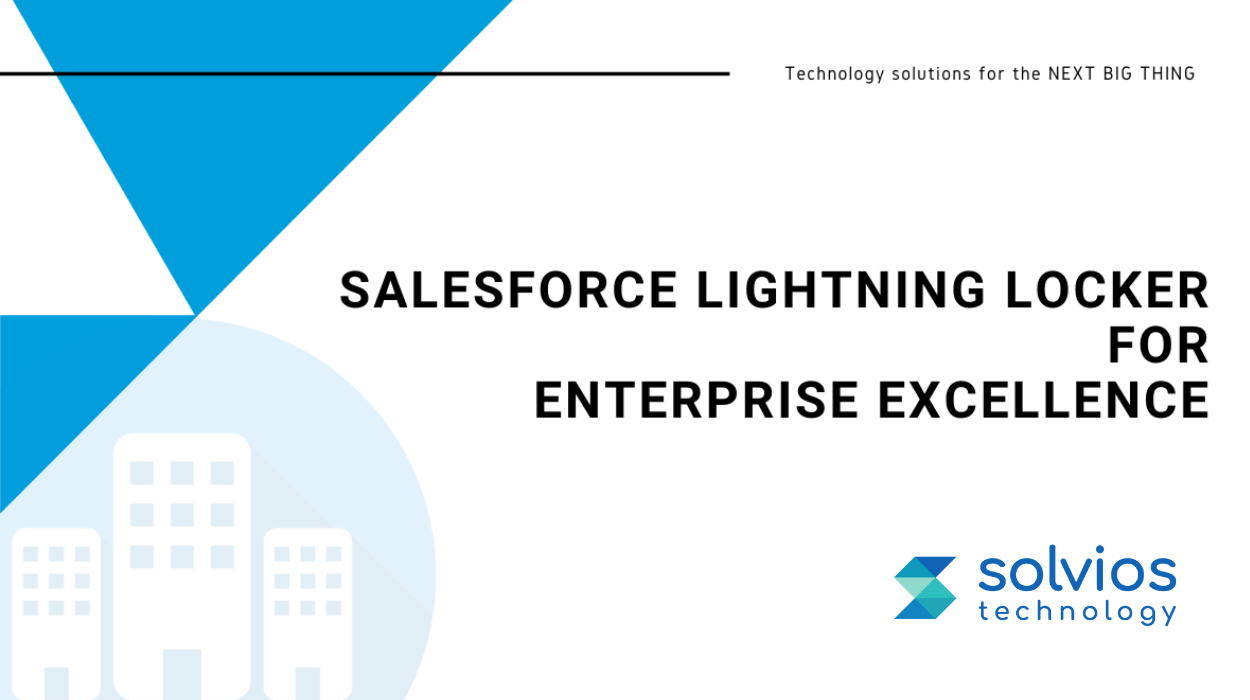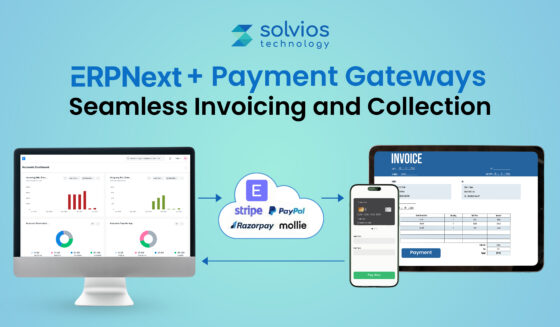
Introduction
Modern web apps are quick, simple, and easy – making them a bigger target of cyber attacks.
As cyber attacks become more common, the cost of a single flaw can include data exposure, downtime, and lost trust. Moreover, the growth of third-party libraries, complex client-side logic, and embedded integrations could further complicate the process.
So does it mean that your systems remain exposed to cyber threats?
Enter Salesforce Lightning Experience – an added layer of security that empowers teams to build highly dynamic, component-based applications.
The platform offers Lightning Locker Service, Salesforce’s security architecture for Lightning components, designed to enforce best practices and block classes of front-end risks before they reach your data.
It isolates component namespaces, applying secure wrappers to browser APIs, and aligning with strict Content Security Policy (CSP) rules. Locker helps mitigate common issues such as DOM pollution, cross-namespace access, and script injection.
Lightning Locker is a security architecture developed for Lightning components. The Salesforce Lightning Locker Service prevents security issues when you build your own components or even include third-party libraries in the lightning components.
Locker Service applies security in Lightning experience, Salesforce, Template-based communities, Standalone apps, Lightning out, and Lightning components for visual force. Lightning locker also improves code supportability by allowing access to supported APIs, and eliminating access to non-published framework internals.
Core Features of Lightning Locker Service: What Sets it Apart?
Component Isolation
What it does
Each component runs inside its own scoped/shadow DOM. Selectors and mutations are limited to that subtree; raw access across component boundaries is blocked. Events are retargeted, and private nodes stay private. If you didn’t expose it as a public prop or event, other components can’t reach it.
Why it helps
Prevents data bleed and UI tampering on pages that mix managed packages, custom code, and third-party widgets. A buggy add-on can’t “reach over the fence,” scrape fields, or rewrite markup it doesn’t own. Refactors are safer too, so the internal structure changes won’t break a neighbor’s brittle selector.
Example:
A marketplace widget can’t traverse into your custom component’s nodes; communication must happen via public APIs/events.
Secure APIs
What it does
You don’t get raw access to the window, document, or the full DOM. Components call a safe, documented set of methods. Non-standard or risky calls either throw or quietly do nothing. Direct string-to-HTML paths are sanitized on the way in.
Why it helps
It closes the usual holes: script injection, DOM reach-through, and “just grab it from globals” shortcuts. A third-party widget can’t fish for cookies or walk into another component’s nodes. Everyone plays by the same small, predictable API surface.
Example
If you need to pass data across components, expose a public prop/event, or use the platform’s messaging hook, not a global variable.
JavaScript Strict Mode (on by default)
What it does
Runs component code in strict mode by default. No accidental globals, no duplicate params, no with, and you can’t assign to read-only props. In a plain function, bare this is undefined (not window).
Why it helps
Bugs appear where they originate, rather than leaking into the global scope. Typos fail fast. Refactors are safer because hidden side effects are harder to create. Minifiers and bundlers also get cleaner signals.
Example:
Rule of thumb: always declare with let/const, keep state inside the component, and pass data through props/events instead of stashing it on the window.
Why Lightning Locker Service is Essential
Protection Against Malicious JavaScript
Locker runs components in a guarded environment, so unknown or tampered scripts can’t wander outside their lane or modify the page behind your back. It narrows what code is allowed to do and keeps risky behaviors out by default.
What that looks like in real life
- Inline or untrusted scripts don’t execute; dangerous functions are blocked.
- Third-party widgets cannot modify headers, footers, or shared UI elements.
- Global objects (like cookies and storage) aren’t exposed to component code.
Defense Against Cross-Site Scripting (XSS)
User input is treated as content—not code. Locker strips unsafe HTML and event handlers, so a copied snippet or form value can’t turn into a hidden script that hijacks the page.
What that looks like in real life
- Comments, reviews, and form fields render safely by default.
- Script tags, on* attributes, and unsafe links are removed before display.
- Rich content is allowed only when it passes through an approved sanitizer.
Ensuring Data Integrity
Components stay in their own sandbox. They can’t peek into—or change—the markup or state of neighboring components. Data moves through clear, public contracts instead of back-door selectors.
What that looks like in real life
- A marketplace tile can’t read your billing form’s inputs.
- Teams share data via documented properties/events, not DOM reach-through.
- Refactors are safer because private structure changes don’t break other code.
Compliance with Security Standards
Locker bakes in practices auditors expect: least-privilege access, CSP-friendly behavior, and strict execution rules. It reduces the attack surface you need to justify and speeds up reviews.
What that looks like in real life
- No inline scripts or “unsafe eval” → cleaner Content Security Policy.
- No cross-namespace DOM access → aligns with least-privilege guidance.
- Strict mode everywhere → fewer silent failures, clearer traceability.
Ready to Strengthen Your Salesforce Security?
Reach out today!What Does Lightning Locker Affect?
Salesforce Lightning Locker carries out security and best practices for custom Lightning components used in the following:
- Lightning Experience
- Salesforce mobile app
- Lightning Communities
- Flows
- Standalone apps that you create (for example, myApp.app) to run in Salesforce Classic or Lightning Experience
- Any other app where you can add a custom Lightning component, such as Salesforce Console in Lightning Experience
- Lightning Out
- Visualforce pages in Salesforce Classic
- Visualforce-based communities
Enabling and Configuring Lightning Locker Service
Default Behavior (API v40+)
Start by setting up the components to an API version 40 or higher to run the Lightning Locker automatically, without any extra setup.
Each bundle follows its own version, so mixed pages work fine: v40+ components are locked down; older ones behave per their version. The benefit is a secure default posture with consistent rules for DOM access, globals, and HTML sanitization across modern components.
Disabling Lightning Locker (case-by-case)
If you must opt out, lower that component’s apiVersion to 39 or below in its metadata. Keep the change scoped to a single bundle, document the reason, and plan a quick return to v40+.
Treat this as temporary setup while running your system. Locker helps teams leverage important guardrails to ensure smooth operations throughout the workflow.
Testing Compatibility (before changing versions)
Validate your codes with Locker’s Console to check if there are any blocked APIs or need rework.
Check the Locker API Viewer for allowed methods, then adjust DOM access, events, and rendering accordingly. Test in a sandbox or scratch org on real devices.
How to Disable the Lightning Locker?
One can disable the lightning locker by making the change to the API version of the lightning component bundle to 39 or below.
Component versioning allows you to integrate a component with a Salesforce API version. While creating a component, the default version is the newest API version.
In previous releases, one could able to set the API version of a component to 39.0 using the Developer Console. On the other hand, you cannot utilize the console for this purpose because the console holds up only the six previous API versions.
Now, the API version can be set in the component’s metadata file by utilizing Salesforce CLI. In the AuraDefinitionBundle metadata of your component, use the APIVersion field to adjust the API version to 39.0.
In the below example – the metadata file myComponent.cmp-meta.xml for component myComponent.cmp sets the API version to 39.0:
< ?xml version=”1.0″ encoding=”UTF-8″ ?>
< AuraDefinitionBundle xmlns=”http://soap.sforce.com/2006/04/metadata ” >
39.0
My Component
< /AuraDefinitionBundle >
Change the Locker API Version for your Org
- From Setup, enter Session in the Quick Find box, and then select Session Settings.
- In the Locker API Version section, for the Use security enhancements in API version field, select the API version.
- Click Save.
Lightning Locker Tools
Lightning Locker tool allows you to build more secure code that run efficiently with Lightning Locker
Lightning Locker API Viewer
Locker API Viewer displays Lightning Locker’s support of the standard DOM APIs in the Window, Document and Element objects. The SecureWindow, SecureDocument and SecureElement wrappers prevent use of non-supported APIs.
Locker Console Overview
To check out the JavaScript code’s compatibility with Lightning Locker, use Locker Console. You can then compare how it runs while Lightning Locker is enabled or disabled.
Advantages of Lightning Locker
- If one component belongs to a different namespace, another component cannot traverse the DOM. For instance – we cannot read the DOM of lightning base components as they belong to the “Lightning” namespace.
- The custom components do not have authority to system APIs. For instance – custom component cannot access $A.eventService API
- The javascript strict mode is by default enable and need not be specified specifically.
- Access to external JS libraries is restricted without uploading those in the static resource
- Salesforce authorized or out-of-the-box components will have unrestricted access to Document Object Model (DOM) and APIs, as all the components will operate in System Mode.
- All above-listed features make your component more secure.
Disadvantages of Lightning Locker Services
- JS libraries which are non-locker service complaint will not work.
- Document Object Model manipulation has become more restrictive.
Best Practices for Developers
Adhere to Locker-compatible APIs
Use Salesforce’s Locker-compatible surface by default. Build UI with LWC templates, Lightning Base Components, and wire adapters; pass data through @api props and events.
Avoid raw window/document, non-standard APIs, eval, and unsanitized innerHTML. Before you include a library or pattern, check the Locker API Viewer. It ensures proper confirmation of support.
Avoid Direct DOM Manipulation
Let the framework render the DOM. Create templates for the state of operations and use it to compute classes/styles for your own subtree.
Additionally, you might want to avoid reaching to other component’s nodes and keep communications limited to public props or events.
Utilize Locker Tools
Use the locker tools to get a first-hand idea of your operations. It allows you to test workflow early on and paste snippets to check what is sanitized or blocked.
You can also run this operation on the Locker API Viewer before integrating new methods. It helps test third-party code behind a feature flag while logging user experiences.
Regularly Update Components
Leverage the latest security with API version of new updates. Users also have the option to scan Salesforce release notes for LWC/Aura changes and run custom events.
It results in smoother operations, cleaner audits, and better performance come “for free” with newer versions.
Want a Smooth Setup for Lightning Locker Service?
Contact us today!Summary
When it comes to developing an app on the cloud by using lightning web components, Salesforce lightning makes the process easy. Salesforce lightning lets you automate the sales process of your organization, build apps at lightning speed, and provide access to your data anytime, anywhere.
Hire our Salesforce lightning developers who assist you to manage all your Salesforce tasks including Salesforce Lightning Locker Services. At Solvios Technology, we are a group of trusted Salesforce development company in the USA, delivering enterprise solutions to boost your business.
Tags
Related Blog
Want to get started with App Development?
These applications are acquiring enormous prevalence by offering hands-on enterprise mobility solutions for organizations around the globe.
Start A Conversation
















